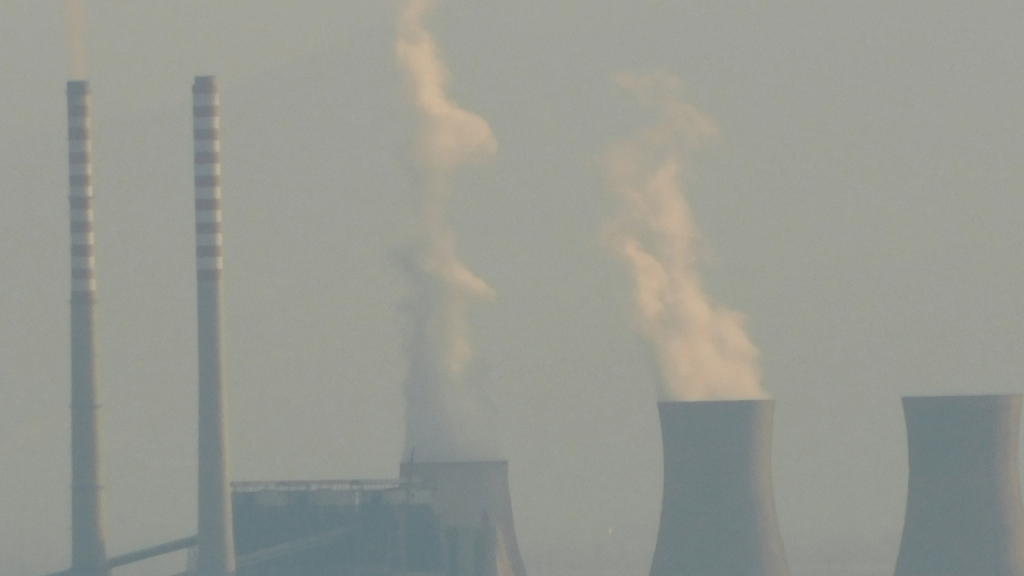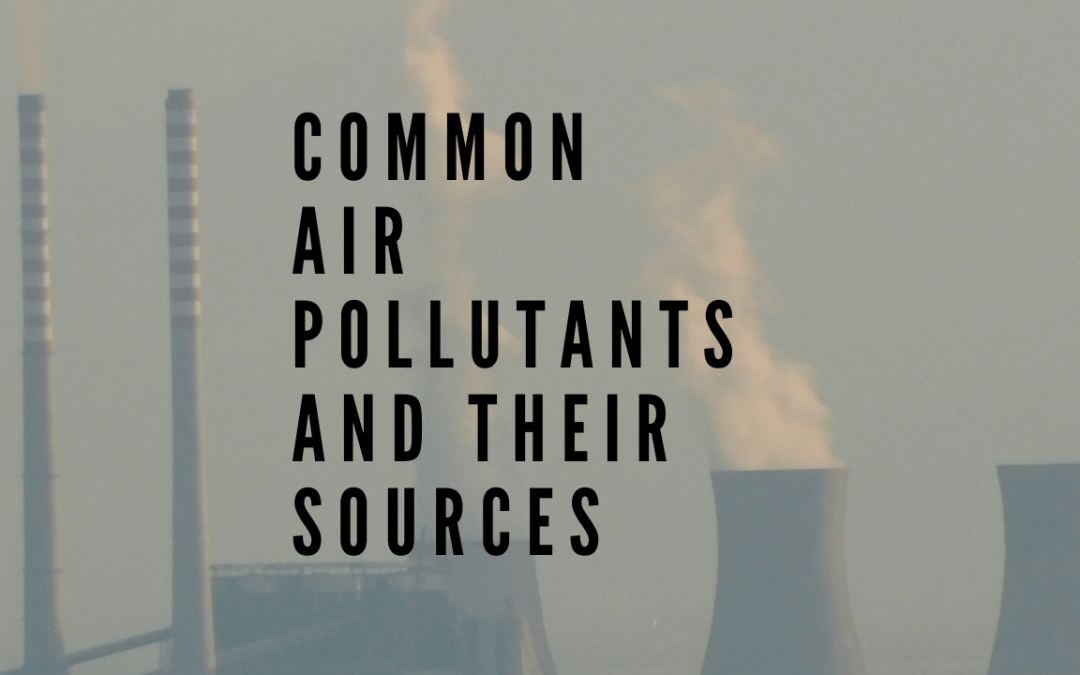Air pollution is a pressing concern affecting both human health and the environment. Let’s refine our explanation:
Common Air Pollutants And Their Sources can vary widely, stemming from both natural occurrences and human activities. Events such as volcanic eruptions, wildfires, and dust storms contribute to air pollution, alongside human-driven sources like industrial operations, transportation, and energy production processes.
The impact of air pollution on human health is significant and multifaceted. Exposure to polluted air can cause respiratory conditions including asthma and bronchitis, and is linked to serious cardiovascular problems like heart disease and strokes. Furthermore, certain air pollutants, such as benzene and dioxins, have been associated with a heightened risk of developing cancer.
There are several key types of air pollutants, each originating from specific sources and having unique effects on health and the environment. This blog post will explore common air pollutants including particulate matter, which consists of tiny particles suspended in the air; nitrogen oxides, produced mainly through combustion processes; sulfur dioxide, generated largely by burning fossil fuels; ozone, a secondary pollutant formed through chemical reactions in the atmosphere; carbon monoxide, resulting from incomplete combustion; and volatile organic compounds (VOCs), released from a variety of sources such as solvents and chemicals.
Gaining a deeper understanding of Common Air Pollutants And Their Sources, along with their consequences, is essential for effectively tackling air pollution. By increasing awareness and promoting informed actions, it’s possible to adopt more sustainable practices, develop cleaner technologies, and enforce policies that protect both human health and the natural environment.
Major Air Pollutants
Particulate Matter (PM)

Particulate matter consists of tiny solid or liquid particles suspended in the air. These particles vary in size and composition and pose risks when inhaled, as they can penetrate deep into the respiratory system, including the lungs.
Particulate matter (PM) falls into two main size-based categories: PM2.5 and PM10. PM2.5 particles, smaller than 2.5 micrometers, pose a particular concern as they can easily penetrate deep into the lungs and possibly enter the bloodstream. PM10 particles measure up to 10 micrometers in size.
A wide range of sources, including both natural events and human activities, contribute to particulate matter levels. Vehicle emissions, power plant outputs, and wildfires significantly add to PM pollution. In places like deserts or construction sites, activities can stir up dust and soil particles, increasing particulate matter levels in the air. Industrial processes involved in manufacturing and construction also release these particles into the environment.
Exposure to particulate matter can cause severe health problems. It leads to respiratory difficulties, airway irritation, coughing, and shortness of breath. Chronic exposure can worsen conditions such as asthma and chronic obstructive pulmonary disease (COPD). Moreover, particulate matter can contribute to cardiovascular issues like heart attacks, strokes, and high blood pressure. Certain types of particulate matter might also raise the risk of developing lung cancer.
Nitrogen Oxides (NOx)

Nitrogen oxides, harmful gases released during the combustion of fossil fuels, mainly come from cars, power plants, and factories. These gases form when fuel burns at high temperatures, causing nitrogen and oxygen in the air to combine into compounds like nitrogen dioxide (NO2) and nitric oxide (NO).
However, human activities aren’t the only source of NOx. Natural events such as forest fires and lightning strikes also release nitrogen oxides into the air. Additionally, soil microbes, particularly in fertilized agricultural lands, can produce NOx.
Exposure to NOx can lead to various respiratory issues, such as irritation, coughing, and difficulty breathing. Long-term exposure can exacerbate or even cause conditions like asthma and bronchitis. Moreover, when NOx reacts with other substances under sunlight, it forms ground-level ozone and particulate matter, which are also harmful to our lungs.
To lower NOx emissions, we need to adopt cleaner fuels like low-sulfur diesel or renewable energy sources, which can significantly reduce emissions from transportation and industry. Improving engine efficiency and using catalytic converters can also decrease NOx emissions. For power plants and factories, technologies like selective catalytic reduction (SCR) and flue gas desulfurization (FGD) can help minimize NOx production.
On a personal level, choosing public transportation, cycling, or walking over driving can reduce our contribution to NOx pollution. Additionally, avoiding outdoor activities when pollution levels are high can help protect our health.
Our commitment to sustainable practices and environmental protection drives us to raise awareness about the sources and impacts of NOx, encouraging actions to improve air quality and protect health and ecosystems.
Ozone (O3)
Ozone is a key component in the discussion of Common Air Pollutants And Their Sources. This gas forms when nitrogen oxides (NOx) and volatile organic compounds (VOCs) react under the influence of sunlight. High up in the atmosphere, ozone acts as a protective layer against the sun’s ultraviolet rays. However, at ground level, it becomes a pollutant with harmful effects. Let’s delve into the origins of NOx and VOCs:
NOx is released into the air by vehicles, industrial activities, and natural phenomena such as lightning strikes and microbial actions in soil, all of which play a role in the formation of ground-level ozone.
VOCs emerge from the combustion of fossil fuels, operations in various industries, and naturally from plants and trees. These organic compounds, when mixed with NOx in the presence of sunlight, lead to the production of ozone.
The health implications of ozone exposure are significant, especially for individuals with respiratory conditions like asthma. Ozone can irritate the respiratory system, leading to coughing, chest tightness, and difficulty breathing. Prolonged exposure exacerbates these issues and heightens the risk of developing respiratory infections. Moreover, ozone contributes to the creation of other harmful pollutants, impacting respiratory and heart health.
Addressing the issue of ozone and its formation is crucial in managing Common Air Pollutants And Their Sources. Reducing NOx and VOC emissions is fundamental, and achievable through the adoption of cleaner fuels, improving engine efficiency, and implementing pollution control measures in industries and power plants.
Individual actions also have a vital role in mitigating ozone pollution. Opting for public transport, carpooling, minimizing the use of personal vehicles, and selecting products with a lower VOC content can significantly decrease the emissions that contribute to ozone production.
Sulfur Dioxide (SO2)

Besides the burning of fossil fuels, volcanic eruptions and certain industrial activities are significant sources of SO2. Volcanoes can release large quantities of sulfur dioxide, contributing to air pollution in surrounding areas. Similarly, industries that use materials containing sulfur can emit SO2 into the atmosphere.
Breathing in sulfur dioxide can be harmful, particularly for people with lung conditions. It can irritate the respiratory system, leading to coughing, wheezing, and shortness of breath. Long-term or intense exposure to SO2 can exacerbate lung diseases and heighten the risk of respiratory infections. Furthermore, SO2 plays a role in forming other harmful air pollutants, like particulate matter, which can further impact respiratory and heart health.
To cut down on SO2 emissions, implementing effective strategies is key. Switching to cleaner energy sources such as natural gas or renewable energy can significantly reduce SO2 emissions. In power plants and industries, using technologies like flue gas desulfurization systems can help lessen SO2 emissions. Moreover, stricter regulations and emissions standards can promote cleaner operational practices.
On a personal level, individuals can reduce their exposure to SO2 by limiting outdoor activities during times of high pollution, especially in areas known for elevated SO2 levels. Using air purifiers indoors can also assist in filtering out sulfur dioxide and other pollutants, improving the air quality inside homes.
Addressing SO2 emissions is essential for safeguarding both human health and the environment. Elevated levels of sulfur dioxide contribute to acid rain, which damages ecosystems, affects plant life, and corrodes buildings and materials. By reducing SO2 emissions, we help preserve biodiversity, protect ecosystems, and ensure the health of our natural resources.
Carbon Monoxide (CO)
Carbon monoxide, a colorless and odorless gas, is created when fuels such as gasoline, diesel, and natural gas don’t burn completely due to a lack of oxygen. This gas is primarily emitted from vehicles, industrial processes, and occurrences like wildfires.
Being exposed to carbon monoxide can be harmful, leading to symptoms such as headaches, dizziness, nausea, and tiredness. In severe cases, high levels of CO can cause unconsciousness or even be fatal. Moreover, carbon monoxide plays a role in forming other harmful pollutants like ozone and particulate matter, which can further impact our health.
To lower the levels of CO emissions, it’s important to use cleaner fuels, improve engine efficiency, and implement pollution control measures in industries. On an individual level, we can contribute by minimizing vehicle idling and ensuring that indoor spaces have good ventilation when using gas-powered devices.
Minimizing carbon monoxide emissions is essential for protecting our health and the environment. Carbon monoxide not only poses direct health risks but also impacts air quality and natural habitats. Given its ability to travel great distances, tackling CO pollution requires global cooperation. Through strict regulations, adopting sustainable habits, and raising awareness, we can significantly reduce carbon monoxide emissions worldwide.
Volatile Organic Compounds (VOCs)
Volatile Organic Compounds (VOCs) are chemicals that easily turn into vapors at room temperature, contributing significantly to air pollution indoors and outdoors. They come from various sources like burning fuel, industrial activities, everyday household products like cleaners and paints, and even from plants. One of the main concerns with VOCs is their role in creating ground-level ozone when they react with other pollutants in sunlight. This type of ozone can worsen breathing problems, such as asthma, and lead to long-term respiratory issues.
Some VOCs are directly harmful to our health, with exposure linked to severe conditions including damage to the liver and kidneys, problems with the nervous system, and an increased risk of cancer. Inside our homes and workplaces, VOCs can be found in many common products and materials, leading to higher concentrations, especially in areas with poor ventilation, which poses additional health risks.
To reduce the harmful effects of VOCs, it’s essential to regulate emissions, opt for cleaner industrial processes, use eco-friendly products, and ensure good indoor air quality. These steps can help protect our health and the environment from the impacts of these compounds.
Lead (Pb)
Lead (Pb) is a toxic heavy metal that can cause serious health problems when people are exposed to it, especially children. It used to be common in paint, gasoline, plumbing pipes, and many other products, but many countries have reduced its use through strict regulations.
Despite this, lead still poses a risk in older buildings, polluted soil, and some industrial activities. Drinking water that has passed through lead pipes, inhaling dust from lead-based paint, or consuming soil or dust contaminated with lead can expose people to lead.
Lead exposure leads to extensive and serious health effects. Even small amounts of lead can damage children’s brain development, lower IQ, cause behavioral issues, and decrease school performance. Adults also face increased risks of heart disease, high blood pressure, kidney damage, and reproductive issues from lead exposure. Lead is particularly dangerous because it accumulates in the body over time.
To protect public health, minimizing lead exposure is crucial. Actions include replacing lead pipes, cleaning up contaminated soil, enforcing strict regulations on industries that emit lead, and raising awareness about lead’s dangers. Ensuring our living environments are lead-free is essential for protecting the health of current and future generations.
Effects on Human Health
Air pollution has a significant and wide-reaching impact on human health, affecting nearly every system in the body. For example, high levels of particulate matter (PM) are linked to serious heart problems, such as heart attacks and strokes. This is because these tiny particles can get deep into our lungs and even into our bloodstream, causing inflammation and making existing health issues worse.
Gases like nitrogen dioxide (NO2) and sulfur dioxide (SO2) are particularly bad for people with lung diseases, causing more frequent asthma attacks, chronic bronchitis, and other respiratory problems. Vulnerable groups, including children, older adults, and those with pre-existing health conditions, often suffer more during periods of high pollution, leading to more hospital visits.
Ozone (O3) may be helpful higher up in the atmosphere, but at ground level, it’s a different story. It irritates the lungs, making it harder to breathe deeply, which can be especially problematic for people with lung diseases. Carbon monoxide (CO) is another dangerous pollutant; it attaches to hemoglobin in our blood more easily than oxygen does, reducing the oxygen available for our organs and tissues. This can be very risky for individuals with heart conditions.
Volatile Organic Compounds (VOCs) are a large group of chemicals that can cause everything from eye, nose, and throat irritation to more serious issues like liver and kidney damage, and even cancer. Exposure to lead is particularly dangerous for children, as it can affect their development, lower their IQ, and cause behavioral issues. This highlights the broad and significant effects of air pollutants on our health.
Conclusion
Air pollution represents a major challenge that requires collective efforts from all sectors of society to safeguard our health and the environment. In examining Common Air Pollutants And Their Sources, such as particulate matter, nitrogen oxides, sulfur dioxide, ozone, carbon monoxide, and volatile organic compounds, it becomes clear that the issue of air pollution is both intricate and pervasive.
The impact of these pollutants on health is profound, as they are linked to respiratory and cardiovascular diseases, cancer, and other significant health problems. Additionally, these pollutants damage the environment by degrading ecosystems and contributing to climate change, underscoring the urgent need for effective interventions.
Addressing the problem of air pollution calls for a holistic approach. This includes transitioning to cleaner energy sources, implementing rigorous pollution control measures, and motivating industries and individuals to embrace more sustainable practices. Enhancing public awareness and understanding of the sources and consequences of air pollution is also crucial.
FAQ About Common Air Pollutants And Their Sources
The most common air pollutants include particulate matter (PM), nitrogen oxides (NOx), sulfur dioxide (SO2), carbon monoxide (CO), volatile organic compounds (VOCs), ozone (O3), and lead (Pb).
Nitrogen oxides are primarily produced from the combustion of fossil fuels in vehicles, power plants, and industrial facilities. High-temperature combustion processes cause the nitrogen and oxygen in the air to react, forming NOx.
Carbon monoxide is formed from incomplete combustion of carbon-containing fuels, such as gasoline, natural gas, and wood. Common sources include vehicle exhaust, industrial processes, and improperly vented furnaces and stoves.
Yes, air pollution can have detrimental effects on the environment, including acid rain, eutrophication, reduced visibility (haze), damage to wildlife, and climate change.

